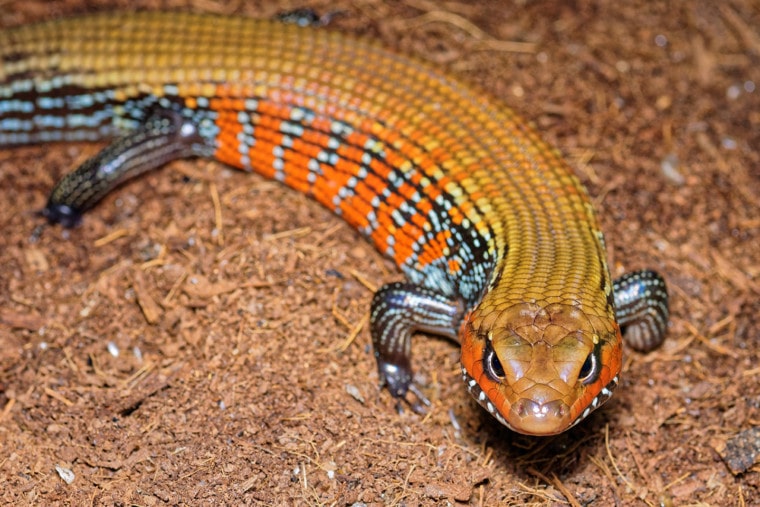
Skinks are less popular pets than other types of lizards, but they can be just as rewarding to keep at home. If you are hoping to learn more about these fascinating creatures, keep reading; we’ve compiled some fun facts about skinks that we know you will enjoy.
What Are Skinks?
Skinks are a type of lizard that typically has a cylindrical body, cone-shaped head, and long tail. They are small creatures, with the largest species reaching up to 30 inches long. Most skinks are no longer than 8 inches long. Not every skink species makes for a great pet, but there are a handful of skinks that are good for beginners. Some popular skink pets include the blue-tongued skink, the fire skink, the blue-tailed skink, and the monkey-tailed skink.

Skinks in the Wild
In the wild, skinks can be found all over the world in many different kinds of habitats. They are frequently found in desert and arid climates where they can burrow in the sand, but they can also be seen in rainforests, forests, prairies, mountainous areas, farmland, wetlands, and even urban and suburban human habitats. In their ecosystems, skinks help control the insect and invertebrate population. Their primary predators are birds such as herons and hawks, as well as raccoons, foxes, and snakes.
The 8 Facts About Skinks
1. Skinks are found on every continent except Antarctica.
Skinks are most commonly found in North America, Southeast Asia, and Australia, but these creatures are represented all over the world. Several species have specialized adaptations for their particular region. For example, sand skinks, or sandfish, have scales on their toes that help them easily run or “swim” just below the surface of the sand.

2. Skinks are lizards, but they look like snakes.
Most skinks have limbs, but their bodies are cylindrical in a way that makes them look snake-like. This makes them look like a cross between a snake and a lizard. However, some species do not have limbs, making it difficult to distinguish them from snakes.
3. There are more than 1,000 species in the scientific family Scincidae, which is the family the skink belongs to.
There are about 4,500 lizard species overall.
4. Most skink species can shed and regrow their tails.
They do this as a mode of defense to distract their predators. It can take between 6 months and a year for the tail to regrow.

5. Skinks are usually carnivores.
Most skink species eat only insects, which helps control insect populations in their respective habitats. Some skinks eat plant matter as well. Sometimes they also eat snails, slugs, rodents, and even other reptiles.
6. Skinks are very adept at burrowing and sometimes build elaborate tunnels underground.
Desert skinks and some other species burrow underground in order to hide from predators. Some species, such as the prehensile-tailed or monkey-tailed skink, are arboreal, which means they climb trees instead of burrowing.
7. Garden skinks can often be found hiding under leaves, in tall grasses, or in logs.
If you want to attract these creatures to your garden to help keep pests at bay, you could consider lots of places where skinks can sun themselves or hide. Logs, bushes, planters, PVC pipes, and even bricks are great hiding places for skinks.

8. Some species of skink lay eggs, while others give birth to young that are fully developed.
The term for an animal that births fully live young is viviparous. Most mammals are considered to be viviparous, while most reptiles are considered to be oviparous, meaning they lay an egg that continues to develop and later hatches. Some animals belong in a third category, known as ovoviviparity, where the mother produces eggs that develop inside her body until it is time for them to hatch.
- See also: Northern Blue-Tongued Skink
Conclusion
Skinks are fascinating creatures that can make great pets. However, there is a lot of variation among skink species depending on what part of the world they are from. Make sure to do your research about a particular species before you decide to bring one of these animals home.
See Also:
Featured Image Credit: Valt Ahyppo, Shutterstock







